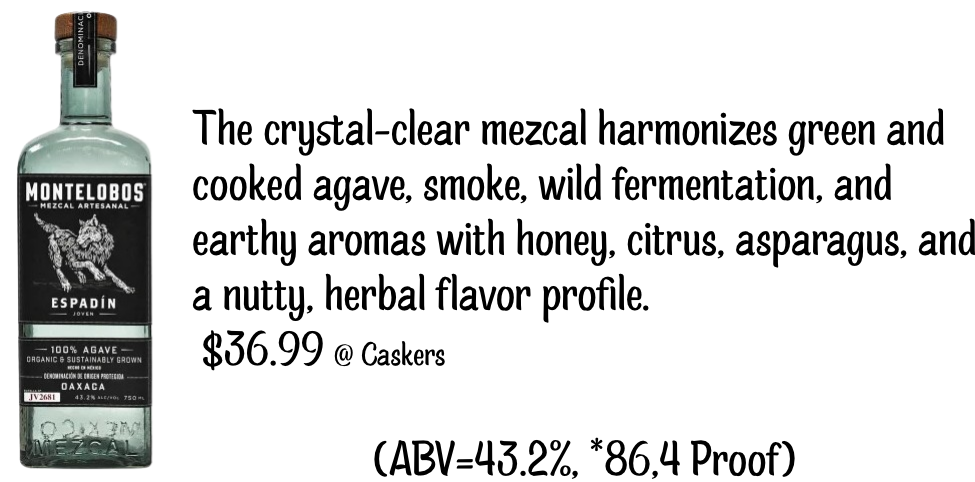Best Mezcal: An All-Inclusive Guide to Top Selections
Mezcal, a traditional Mexican spirit, has accumulated widespread attention for its bold flavors and artisanal craftsmanship. The smoky, complex taste of this unique spirit sets it apart from other agave-based spirits, such as tequila. As you explore the world of this unique liquor, you may come across questions like: What are the best mezcal brands? How should you savor this spirit? And how does it differ from its more ubiquitous cousin, tequila?

The landscape boasts an incredible diversity, shaped by factors like agave types, production methods, and local customs. We’ve gathered insights on some of the top mezcal selections available, recommendations, and fascinating facts about this time-honored spirit. Whether you prefer your mezcal smoky and robust or smooth and easy to sip, there’s a wide variety to match your taste and preferences.
Knowing the distinctions between mezcal and other agave spirits, as well as the unique flavor profiles of different brands, is crucial for a full appreciation of this enthralling drink. Diving into the extensive information we’ve compiled, whether you’re well-versed in mezcal’s world or just beginning to explore its allure, will significantly enhance your enjoyment of this exceptional beverage.
The History of Mezcal
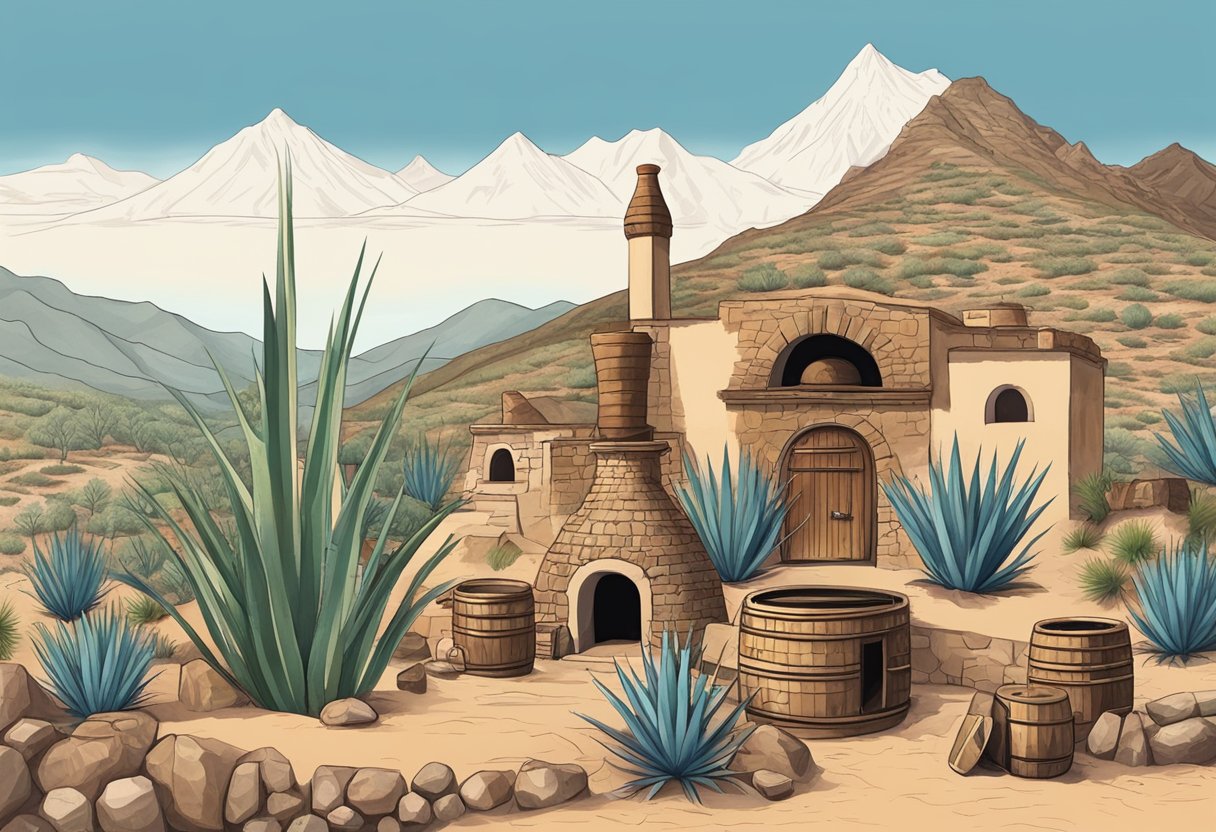
Origins and Cultural Significance
The origins trace back to around 400 B.C in the pre-Hispanic period, when Mexico’s indigenous communities first experienced the psychoactive effects of the fermented sap from the maguey (or agave) plant. The term “mezcal” is derived from the Nahuatl language, with “metl” and “ixcalli” translating to “oven-cooked agave.” This spirit was not only a crucial part of the indigenous peoples’ culture and ceremonies but also evolved into a key industry that significantly boosted Mexico’s economic growth.
Understanding the difference between mezcal and tequila is crucial. Tequila, though a type of mezcal, distinctively originates from Jalisco and three other states and requires at least 51 percent blue agave, contrasting with mezcal’s production from a variety of agave species.
Evolution and Modern Production
The earliest documented instance of “mexcales” being distilled goes back to 1619, a technique introduced by the Spanish that transformed the indigenous fermented agave beverage into today’s mezcal. By the 17th century, mezcal’s production methods had further advanced, evidenced by the Marquis of Altamira establishing a significant agave distillery in what is now the town of Tequila.
Contemporary mezcal production remains deeply rooted in its traditional practices, especially in Oaxaca, which is the epicenter for most mezcal production. The process involves several key steps:
- Harvesting: Mature agave plants are carefully chosen and harvested.
- Cooking: The core of the agave (piñas) is cooked, usually in underground pits.
- Crushing: After cooking, the agave is crushed to release its juices.
- Fermentation: These juices are then combined with water and left to ferment.
- Distillation: Finally, the fermented brew is distilled, commonly in copper apparatus.
The distinct flavors and profiles of various mezcals are a result of the specific agave type, local environment, and the methods used in production. As mezcal gains popularity worldwide, producers—both those adhering to traditional techniques and those employing novel approaches—are collaborating to maintain its rich heritage and cultural value while reaching new audiences and markets. Mezcal embodies the rich essence of Mexican heritage, offering a diverse palette of flavors to enthusiasts around the globe.
Understanding Mezcal
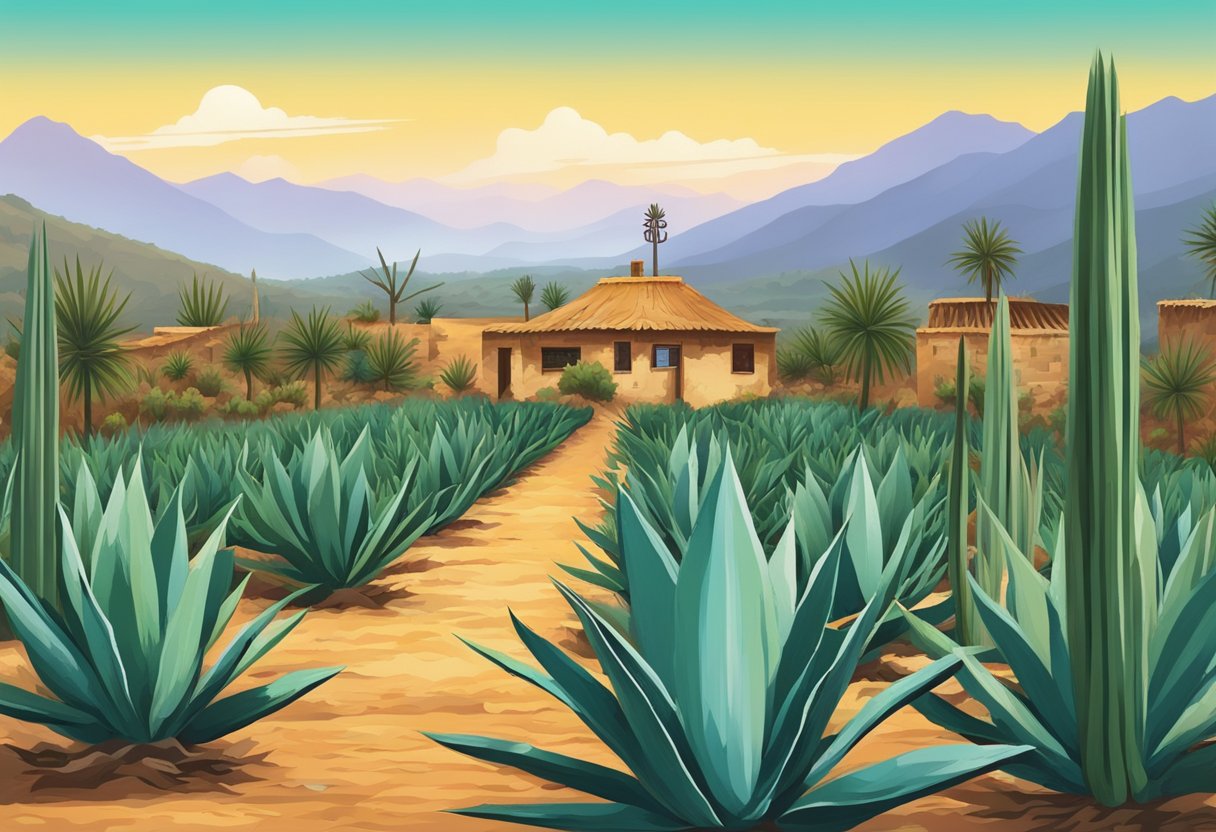
What Defines Mezcal
Mezcal, a traditional Mexican spirit, comes from various agave plants and often draws comparisons to tequila, highlighting key differences. Unlike tequila, which exclusively uses blue agave, mezcal boasts production from over 30 different agave varieties. This diversity in agave types results in a wide array of flavors and experiences when consuming mezcal. Some popular mezcal brands include Del Maguey, Los Amantes, and Montelobos.
Varieties of Mezcal
There are several different varieties of mezcal, each procured from varying agave species. The most common type used for mezcal production is the Espadín agave, accounting for approximately 90% of all mezcal made. Certain regions feature unique agave varieties like Tobalá, Tepeztate, and Madrecuixe, which impart distinctive flavors and characteristics to the spirit.
Here is a brief list of some common agave varieties used in mezcal production:
- Espadín: The workhorse of mezcal, produces a balanced and accessible flavor.
- Tobalá: Wild variety, known for its complex and fruity notes.
- Tepeztate: Rare and slow-growing, resulting in a spicy and bold flavor.
- Madrecuixe: Delivers an herbaceous and subtly smoky profile.
Production Process
The production of mezcal is a rich and fascinating process steeped in tradition. Each step, from harvesting the agave to distilling the spirit, contributes to its distinct taste and character.
- Harvesting: Agave plants are typically harvested after reaching full maturity, which can take anywhere from 7 to 30 years, depending on the variety.
- Cooking: The heart of the agave, called the piña, is roasted in an underground oven. This process imparts the trademark smoky flavor to mezcal.
- Milling: Once cooked, the piñas are crushed, traditionally by a stone wheel called a tahona, to extract the juice, or aguamiel.
- Fermentation: The aguamiel is placed in large wooden or stone vats, where it ferments for several days, transforming the sugars into alcohol.
- Distillation: The fermented mixture is then distilled, usually in copper or clay pots, to increase the alcohol concentration and enhance flavors.
As you explore the world of mezcal, it is crucial to understand the spirit’s various aspects, from the diverse agave varieties to the traditional production process. This knowledge will enhance your appreciation of the intricate flavors and unique characteristics each mezcal brand offers.
Tequila vs Mezcal
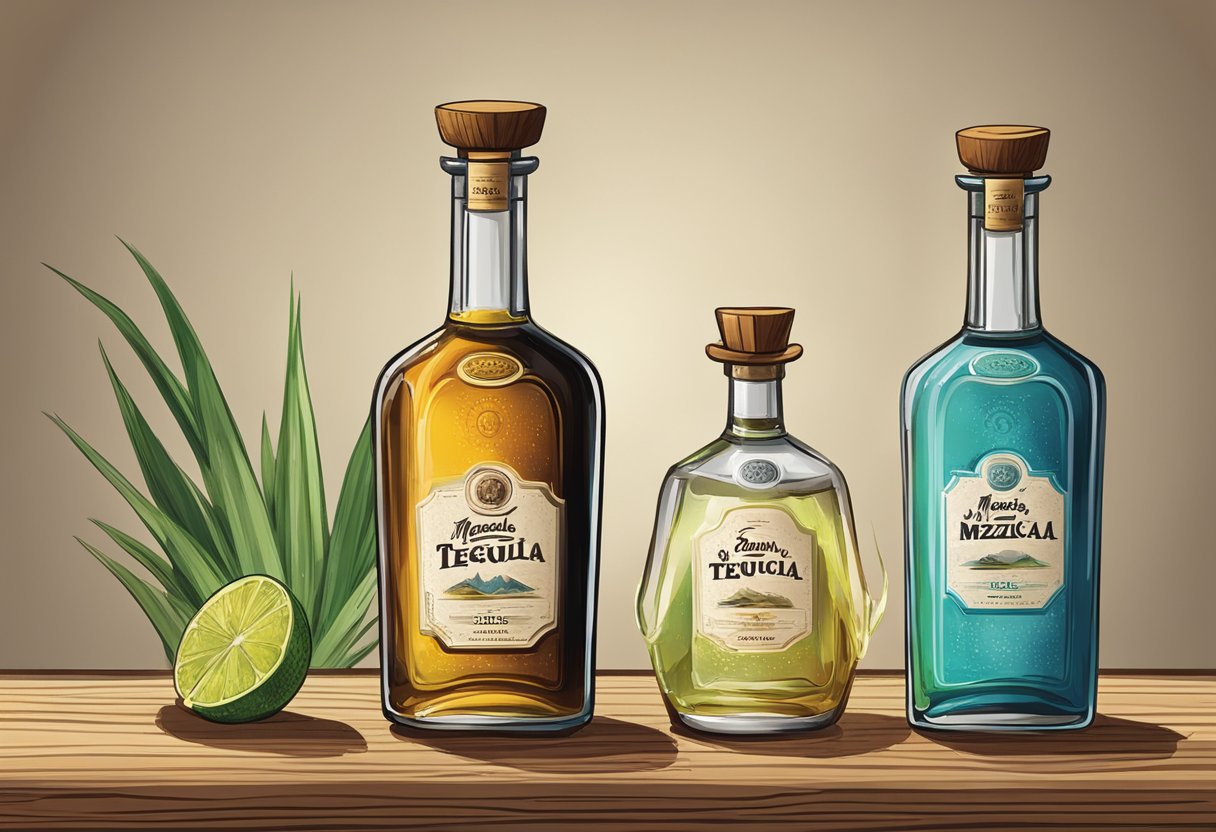
Comparing Flavors and Production
Discussing mezcal versus tequila requires acknowledging their unique flavors and production methods. Mezcal’s smoky flavor distinguishes it from tequila’s cleaner taste, a distinction driven by the variety of agave plants and production locations; various agaves from 13 Mexican states can produce mezcal, whereas tequila production mandates at least 51 percent blue agave.
Here’s a brief comparison:
Choosing Between Mezcal and Tequila
Choosing between mezcal and tequila boils down to personal preference and the way you intend to enjoy these spirits. If you’re drawn to intricate, smoky notes and value traditionally made beverages, mezcal could be your choice. It’s commonly savored neat.
Conversely, if you favor a lighter, more refined taste, you might lean towards tequila. Tequila serves as a popular foundation for mixed drinks like margaritas and palomas. Additionally, tequila comes in different maturity levels, including blanco, reposado, and añejo, offering a range of flavors for you to discover within the realm of tequila.
In summary:
- Choose mezcal if you like smoky, earthy flavors and straight sipping.
- Choose tequila if you prefer lighter tastes and versatility in cocktails.
Top Mezcal Brands
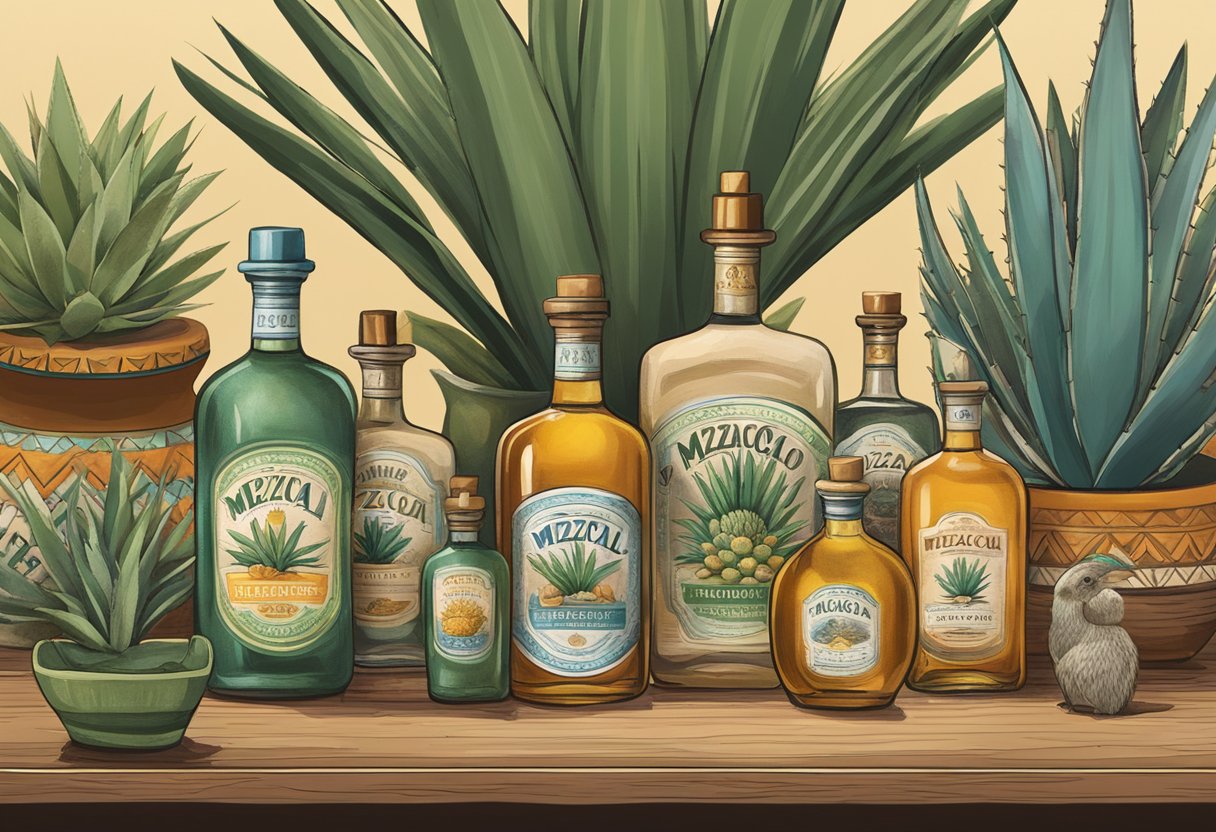
Premium Selections
If you’re looking for exceptional mezcal, Rey Campero Tepextate Mezcal, priced at $123.99, it holds the title of best overall mezcal to enjoy. Another excellent option is the Del Maguey Tobala Mezcal, priced at $130.99. It’s known for its distinct flavor profile and smooth finish.
Some other premium selections include:
- Ilegal – Renowned for its complex yet balanced taste and affordable. Illegal Mezcal has become a popular choice among aficionados.
- Lobos 1707 – A sophisticated option, Lobos 1707 offers a mezcal that appeals to both novices and connoisseurs alike.
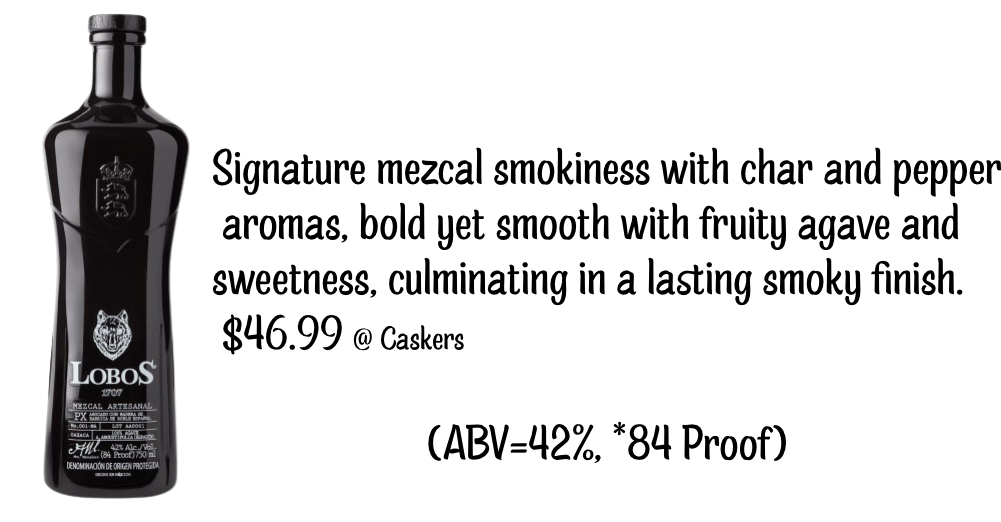
Affordable Finds
For those eager to try mezcal without breaking the bank, Montelobos Espadín is a great choice for beginners. Priced at $36.99, it’s both affordable and approachable.
Another premium choice you could sample is Gracias A Dios Espadín, which has a similar price range at $43.99 per bottle.
These remarkable mezcals offer a variety of tastes and price points for you to explore the world of this unique spirit. Savor each sip and enjoy the depth of flavors that these brands offer.
How to Enjoy Mezcal

Mezcal is a versatile and complex spirit that can be appreciated in various ways. In this section, we will explore two methods for enjoying mezcal: tasting it neat and pairing it with food.
Tasting Mezcal Neat
To fully appreciate mezcal’s unique flavor profile, it is best to taste it neat and at room temperature served between 60-65°F. To achieve the optimal serving temperature, try removing the bottle from storage and letting it sit at room temperature for about 20 minutes before enjoying. This allows the spirit to unfold its entire range of aroma and taste nuances. Here’s a step-by-step guide on how to taste mezcal neat:
- Choose the right glassware: Use a small, wide-mouthed glass like a copita or a snifter to allow the mezcal to open up and release its aromas. You want the glassware that you use to let you experience mezcal’s aroma. “Jicaras” and “Veladoras” are the traditional vessels mezcal is served in. Jicaras are small, hollowed-out gourd bowls. Veladoras are small, shallow, and wide-mouthed glasses. Helping to enhance the overall tasting experience.
- Pour the mezcal: Pour a small amount (around one ounce) of mezcal into the glass.
- Observe the color: Take a moment to appreciate the mezcal’s color, which can range from clear to amber.
- Swirl and sniff: Gently swirl the mezcal in the glass, then take in the aroma by smelling it directly under your nose, at a 45-degree angle, and with your mouth open.
- Take a small sip: Kiss the glass to take a small sip, swish the mezcal around in your mouth, and then swallow.
- Breathe out: Exhale through your mouth immediately after swallowing to fully appreciate the mezcal’s flavors and finish.
Pairing Mezcal with Food
Mezcal’s diverse flavor profile makes it an excellent candidate for food pairings. Here are a few general guidelines to help you select the perfect dish to complement your mezcal:
- Match the intensity: Pair bold, smoky mezcals with robust or spicy dishes, while delicate or floral mezcals go well with lighter, more subtle flavors.
- Complement flavors: Look for dishes that share or enhance the flavor characteristics of your chosen mezcal. For example, a fruity mezcal might pair well with grilled pineapple or citrus-based ceviche.
- Balance the heat: Mezcal’s smokiness can help neutralize spicy foods, while the heat from spicy dishes can bring out the sweetness in mezcal.
Some classic mezcal and food pairings include:
- Tacos al pastor: The combination of spicy marinated pork, sweet pineapple, and smoky mezcal creates a harmonious balance.
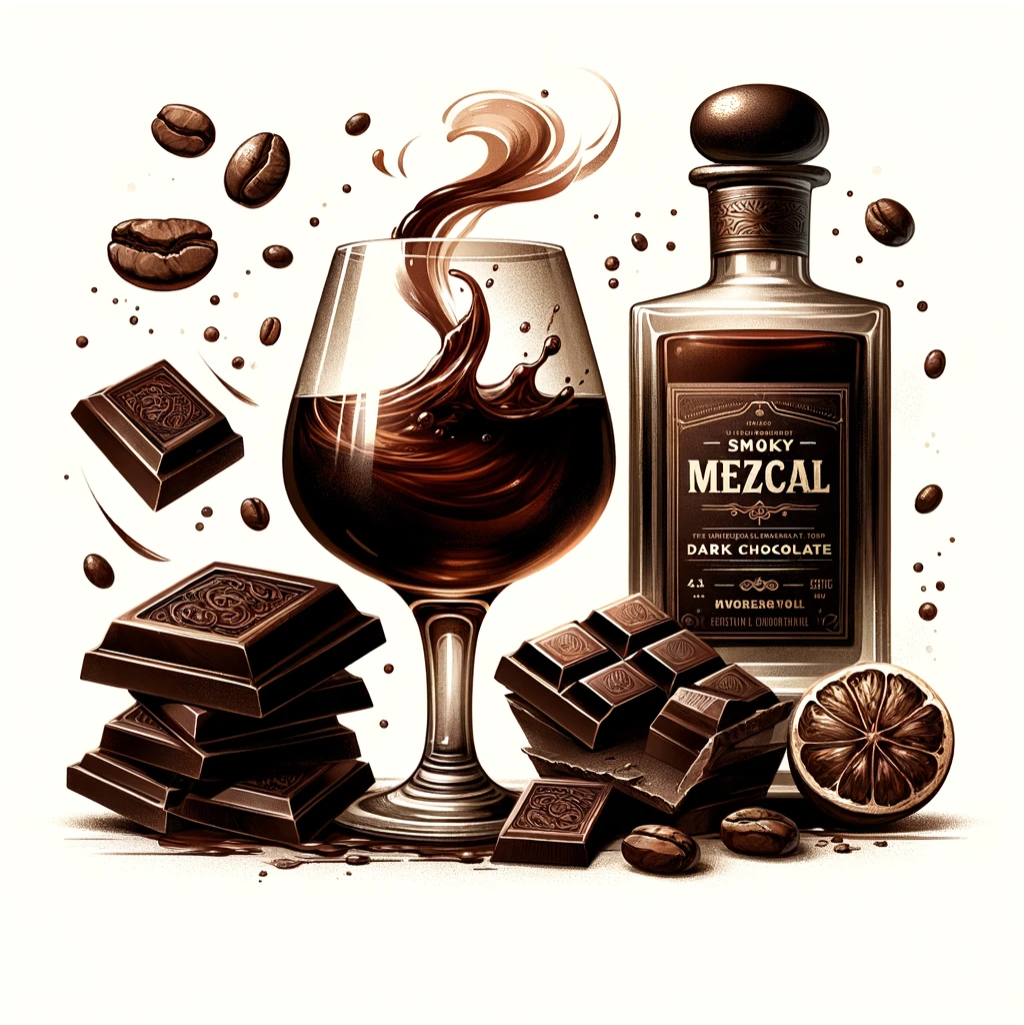 Oaxacan-style tlayudas: These oversized corn tortillas topped with refried beans, Oaxacan cheese, and various toppings create a satisfying, rustic meal to enjoy alongside mezcal.
Oaxacan-style tlayudas: These oversized corn tortillas topped with refried beans, Oaxacan cheese, and various toppings create a satisfying, rustic meal to enjoy alongside mezcal.- Chocolate: For a unique dessert pairing, try enjoying a rich, dark chocolate with a smoky mezcal that displays notes of chocolate and coffee in its flavor profile.
Proper Storage
Ensure you store your mezcal bottle upright in a cool, dry place away from direct sunlight, such as a liquor cabinet, to maintain its freshness. Once you open the bottle, tightly seal the cap so that no air can get into the bottle. Because that will spoil the taste.
Armed with these guidelines, you can confidently explore the world of mezcal and discover new ways to savor this intriguing spirit.
Mixing Mezcal Cocktails
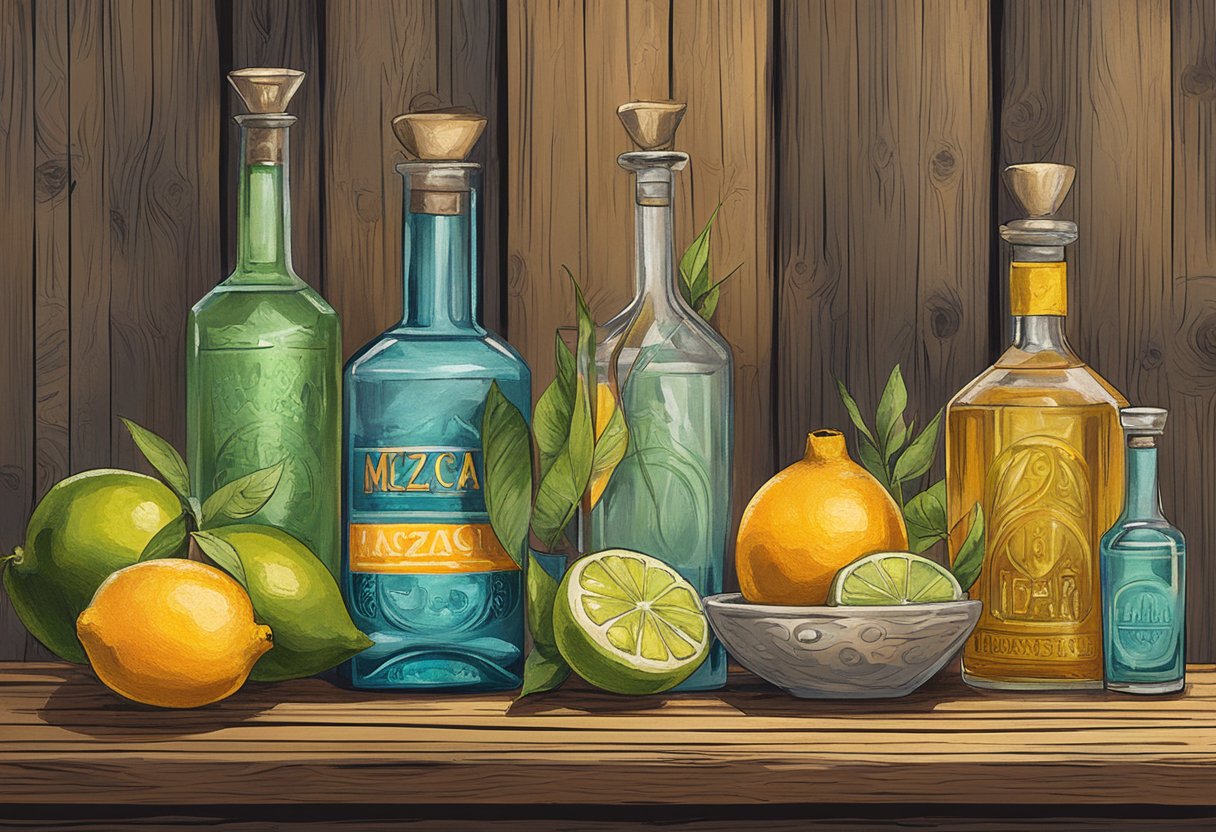
Mezcal is a versatile and intriguing spirit, perfect for a range of enticing cocktails. In this section, we’ll explore both classic and innovative mezcal-based drink recipes that offer unforgettable flavors.
Classic Mezcal Cocktails
The rich smoky taste of mezcal pairs well with many classic cocktails, adding a distinct twist to your favorite drinks. Here are a couple of popular mezcal variations to try:
-
The Mezcal Negroni
is a twist on the classic Negroni cocktail, substituting the traditional gin with mezcal. This substitution infuses the drink with a distinctive smoky flavor, making it a unique and intriguing variant of the original. Mezcal’s complex, earthy tones harmonize with Campari’s bitterness and sweet vermouth, crafting a cocktail that balances boldness and harmony.
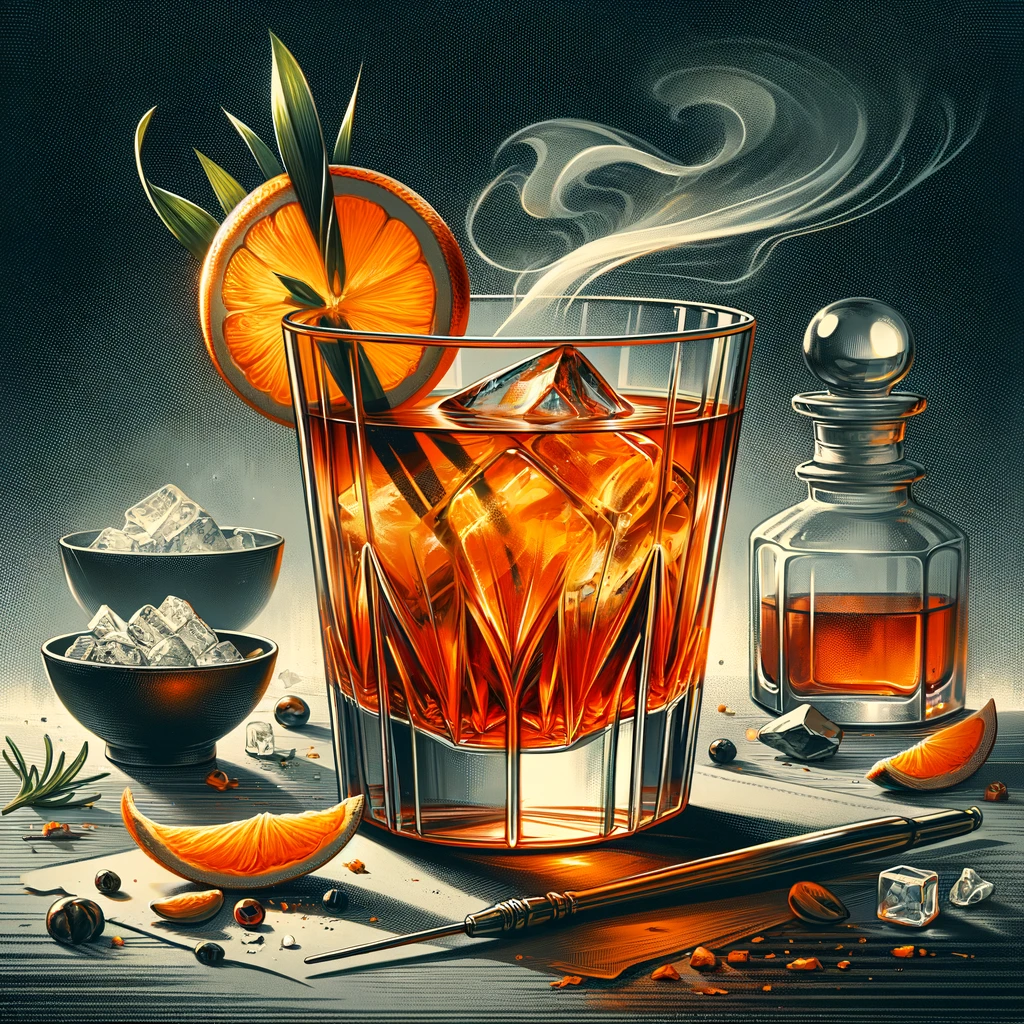
Ingredients:
- Mezcal: Brings a smoky depth to the cocktail.
- Campari: Contributes the signature bitter flavor.
- Sweet Vermouth: Adds a touch of sweetness and complexity.
- Orange Peel: Often used as garnish, it adds a citrusy aroma and flavor.
Preparation:
- Mix the Ingredients: Combine equal parts mezcal, Campari, and sweet vermouth in a mixing glass filled with ice.
- Stir: Gently stir the ingredients to chill and dilute the mixture slightly, enhancing its flavors.
- Strain: Strain the cocktail into a rocks glass over a large ice cube.
- Garnish: Twist a piece of orange peel over the drink to express its oils, then drop it in as garnish.
Variations and Tips:
- Adjust the Ratios: Some prefer adjusting the ratios to suit their taste, making the drink a bit more mezcal-forward or altering the bitterness and sweetness.
- Experiment with Mezcal: Different types of mezcal can change the cocktail’s profile significantly. Experimenting with various mezcals can help you find your perfect match.
- Chill the Glass: For an extra touch of elegance and to keep the drink colder longer, chill the rocks glass before serving.
The Mezcal Negroni is celebrated for its ability to balance the traditional Italian cocktail’s richness with the smoky nuances of Mexican mezcal. It’s perfect for those who appreciate the classic Negroni but are looking for something with a bit more edge and complexity.
-
Mezcal Jungle Bird:
The Mezcal Jungle Bird is a smoky twist on the classic Jungle Bird cocktail, originally created in the 1970s at the Kuala Lumpur Hilton. While known for its unique combination of dark rum, Campari, pineapple juice, lime juice, and simple syrup, the Mezcal Jungle Bird swaps out the rum for mezcal. This substitution introduces a complex, smoky flavor to the cocktail, adding an intriguing depth that complements the bitter, sweet, and fruity elements of the original recipe.
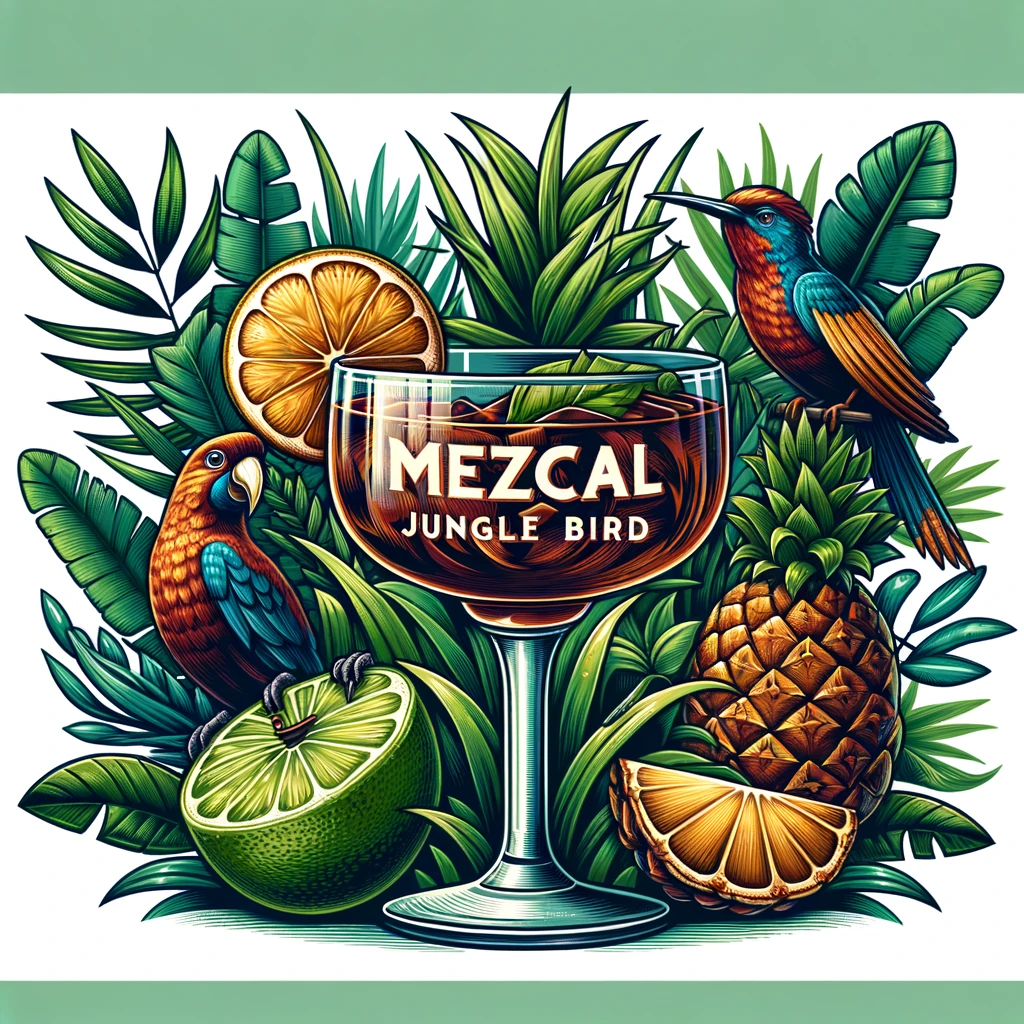
Ingredients:
- Mezcal: Adds a smoky base to the cocktail.
- Campari: Provides a distinctive bitter note.
- Pineapple Juice: Offers sweetness and a tropical flavor.
- Lime Juice: Adds freshness and acidity to balance the sweetness.
- Simple Syrup: Adjusts the sweetness to the desired level.
- Pineapple Leaf or Lime Wheel (for garnish): Enhances the presentation and adds a touch of tropical flair.
Preparation:
- Combine Ingredients: In a shaker, mix the mezcal, Campari, pineapple juice, lime juice, and simple syrup.
- Shake: Add ice to the shaker and shake vigorously until well-chilled.
- Strain: Strain the mixture into an ice-filled glass, typically a rocks or tiki glass for an authentic presentation.
- Garnish: Garnish with a pineapple leaf or a lime wheel to add visual appeal and a hint of aroma.
Tips and Variations:
- Adjust the Sweetness: Depending on your preference and the sweetness of your pineapple juice, you may want to adjust the amount of simple syrup.
- Experiment with Mezcal: Different types of mezcal can vary in smokiness and flavor profile. Experimenting with various mezcals can help tailor the cocktail to your taste.
- Fresh Ingredients: For the best flavor, use fresh lime juice and high-quality pineapple juice.
The Mezcal Jungle Bird is a modern twist on a classic, combining the traditional appeal of a tiki cocktail with the contemporary flair of mezcal. It’s perfect for those who enjoy a cocktail with a balance of smoky, bitter, sweet, and tangy flavors, making it a standout choice for any occasion.
Some bartenders suggest using mezcal espadín for mixing, as it offers a more consistent flavor profile compared to other types of mezcals.
Innovative Recipes
Adventurous palates can discover a world of unique and exciting mezcal cocktails. Here are a few inventive recipes to elevate your mezcal mixology skills:
Naked and Famous:
The Naked and Famous cocktail is a modern classic, known for its equal-parts composition and its vibrant, complex flavor profile. This cocktail is part of the family of drinks that follow the “equal parts” rule, making it relatively easy to remember and prepare, yet it offers a sophisticated and intriguing taste experience.

Ingredients:
- Mezcal: Provides a smoky base that is the foundation of the cocktail’s unique flavor.
- Aperol: Adds a bittersweet, citrusy note, contributing to the cocktail’s complexity and giving it its distinctive orange hue.
- Yellow Chartreuse: Brings herbal sweetness and contributes to the cocktail’s depth and aromatic qualities.
- Fresh Lime Juice: Adds a necessary acidity to balance the sweetness and enhances the overall freshness of the drink.
Preparation:
- Chill a Coupe Glass: Begin by chilling a coupe glass to ensure the cocktail is served cold.
- Combine the Ingredients: In a shaker, combine equal parts of mezcal, Aperol, Yellow Chartreuse, and fresh lime juice.
- Shake with Ice: Add ice to the shaker and shake vigorously until the mixture is well chilled.
- Strain and Serve: Strain the cocktail into the chilled coupe glass.
Serving Tips:
- No Garnish Required: The Naked and Famous cocktail typically does not require a garnish, as the focus is on the drink’s vibrant color and balanced flavor profile.
- Experiment with Mezcal: The choice of mezcal can influence the smokiness and overall flavor of the cocktail. Experimenting with different mezcals can personalize the drink to your taste preferences.
- Use Fresh Lime Juice: For the best taste, always use fresh lime juice rather than bottled.
The Naked and Famous cocktail celebrates its boldness and balance, marrying mezcal’s smoky notes with Yellow Chartreuse’s herbal sweetness and Aperol’s bittersweet complexity, all brightened by fresh lime juice. It’s a must-try for those who appreciate cocktails that offer a harmonious blend of flavors.
Mezcal and Hibiscus Cocktail Recipe:
Mezcal and Hibiscus infuses floral, tangy flavors of hibiscus with the smoky notes of mezcal. Hibiscus offers a delightful and visually stunning take on contemporary mezcal cocktails.
Ingredients:
- 2 oz Mezcal: For the smoky base.
- 1 oz Hibiscus Syrup: For floral sweetness. You can make hibiscus syrup by steeping dried hibiscus flowers in hot water and then adding sugar to the strained liquid until dissolved.
- 0.75 oz Lime Juice: Adds freshness and acidity.
- 0.5 oz Aperol: For a hint of bitterness and complexity.
- Optional: A splash of Yellow Chartreuse for an herbal touch.
Preparation:
- Chill a Cocktail Glass: Begin by chilling your cocktail glass in the freezer.
- Shake the Ingredients: Combine the mezcal, hibiscus syrup, lime juice, Aperol (and Yellow Chartreuse if using) in a shaker with ice.
- Shake Well: Shake until the mixture is well chilled.
- Strain: Strain the cocktail into the chilled glass.
- Garnish: Garnish with a lime wheel or a dried hibiscus flower for an elegant presentation.
This drink is visually appealing and very delicious. It’s a refreshing, smoky, and slightly floral cocktail that’s perfect for those looking to explore the versatility of mezcal in mixed drinks.
With a little experimentation and creativity, you can enjoy the smoky, complex flavors of mezcal in a variety of delicious concoctions.
Responsible Consumption
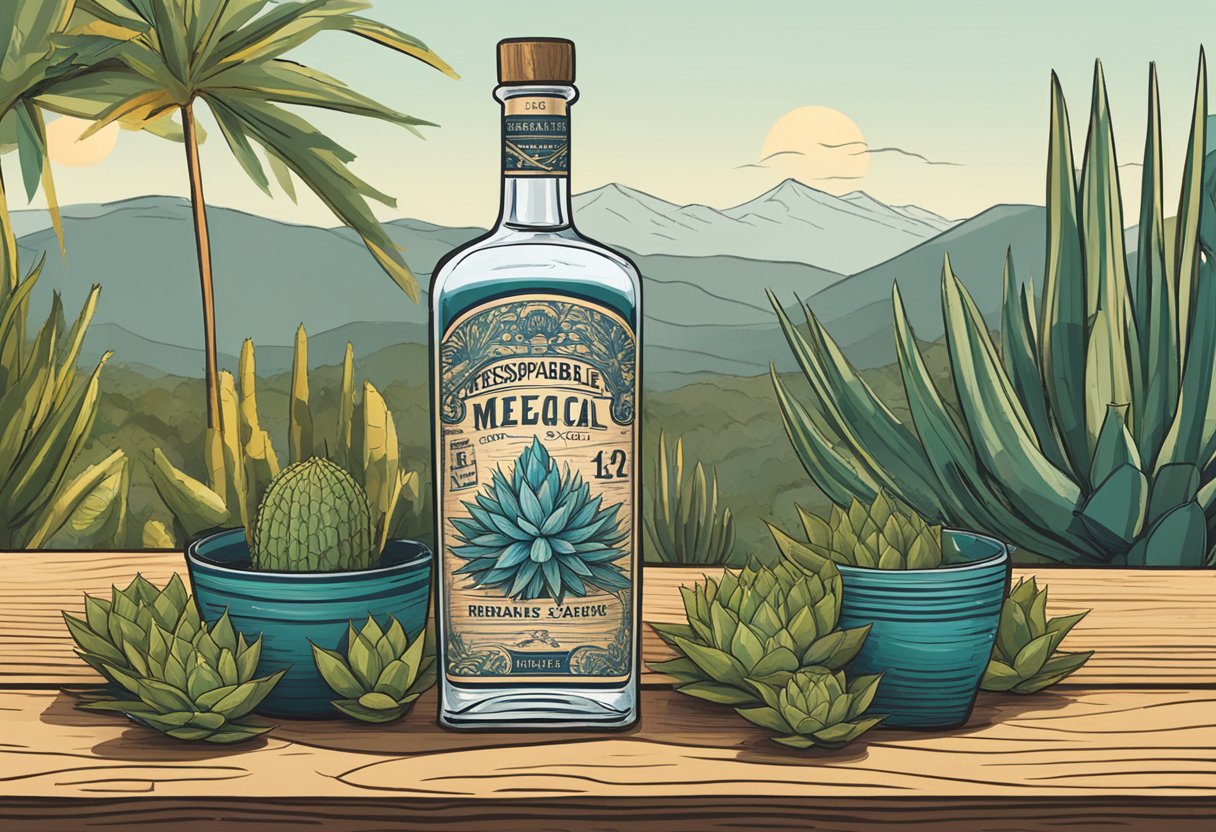
Understanding Alcohol Content
Enjoying Mezcal Responsibly
To ensure you enjoy mezcal in moderation, follow these guidelines:
- Know your limits: Be aware of your personal alcohol tolerance and stick to it. Keep track of how many ounces or shots you’ve consumed to avoid losing count.
- Pace yourself: Sip mezcal slowly, savoring its distinct flavors and aroma. Mezcal is often enjoyed neat or in well-crafted cocktails, unlike other spirits which can be consumed as shots. This encourages you to take your time and appreciate its unique characteristics.
- Stay hydrated: Mezcal can be dehydrating, so make sure you’re drinking water between sips to prevent this. A good rule of thumb is a glass of water for every alcoholic beverage consumed.
- Don’t drink on an empty stomach: Having a decent meal before or while drinking mezcal can help in absorbing the alcohol, reducing its effect on your system.
Remember, consuming mezcal responsibly not only helps you enjoy its unique flavors but also shows respect for the culture and traditions of the people who produce it.
Frequently Asked Questions
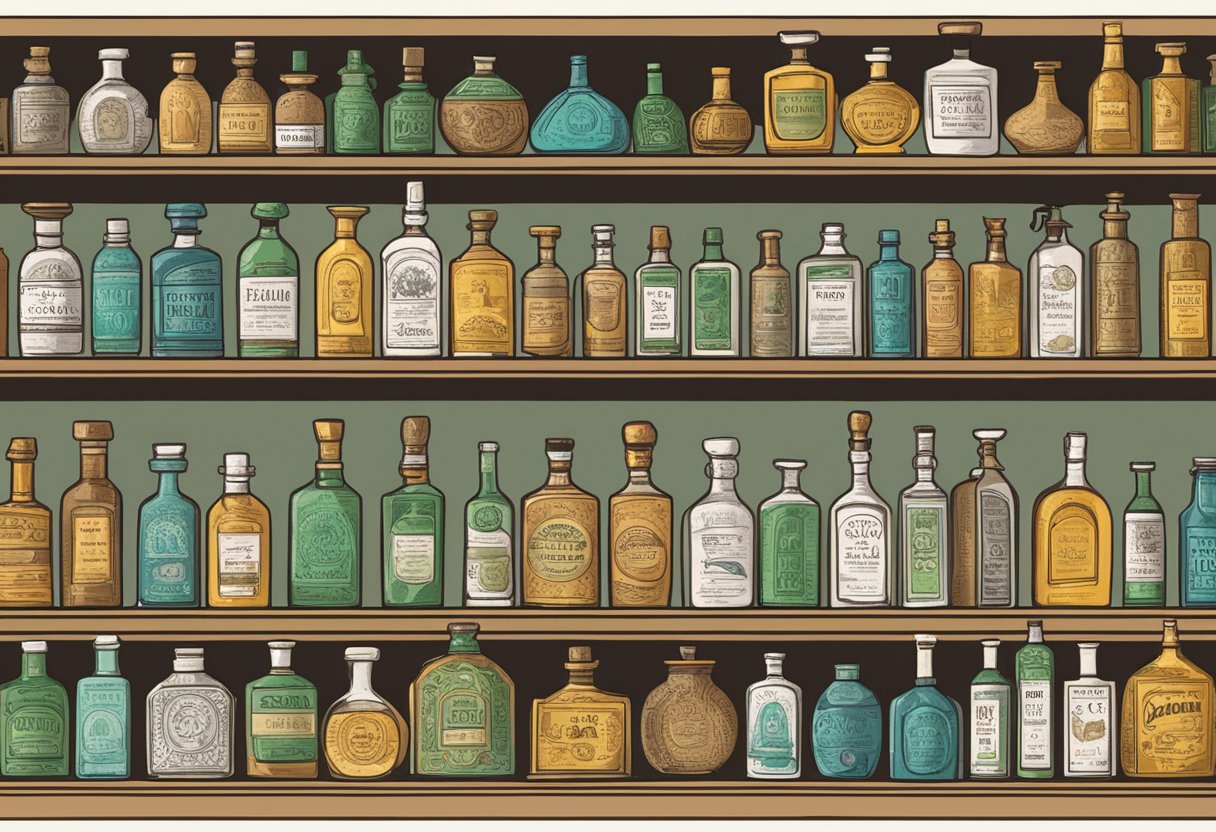
What distinguishes a premium mezcal suitable for sipping?
A premium mezcal suitable for sipping typically has a well-balanced flavor profile, smooth texture, and high-quality ingredients. Artisanal production methods often craft it, including roasting the agave in underground pits and employing natural fermentation. Look for mezcals with diverse flavors and aroma profiles, like Código 1530 Ancestral Joven.
Which mezcal offers the best value for its price?
The best value for its price in a mezcal depends on personal preferences, but some brands offer great quality at affordable prices. Consider trying Campante Joven for a well-rounded option.
What are the characteristics of a mezcal that pairs well with cocktails?
A mezcal that pairs well with cocktails typically has a versatile flavor profile, mid-range smokiness, and a reasonable price point. Look for smoothness and balance, allowing the mezcal to blend seamlessly with other cocktail ingredients.
Which mezcal brand is considered superior for creating a classic margarita?
Choosing a mezcal for a classic margarita is subjective but try experimenting with different brands to find the one that suits your taste. Some mezcals, such as Del Maguey Vida, are popular choices for their balanced flavor and approachable price.
How does the flavor profile of mezcal compare to that of tequila?
Keep in mind that, technically, tequila is a type of mezcal. Mezcal and tequila are both agave spirits, but their flavor profiles differ. Mezcal is often smokier and more complex due to its production method, involving underground pit roasting. Tequila typically boasts a lighter and simpler flavor, crafted exclusively from blue agave.
What are the traits of a mezcal that contribute to a pronounced smoky taste?
A pronounced smoky taste in mezcal comes from the production process, specifically the underground roasting of agave hearts in earth pits. The wood and charcoal used during this process impart smoky flavors to the final product. To find a mezcal with a more pronounced smoky taste, look for those made using traditional, artisanal methods and pay attention to reviews mentioning smoke intensity.
- Old Grand Dad Bourbon: A Classic American Whiskey
- Bombay Sapphire: The Artful Blend of Exotic Botanicals
- Crown Royal Salted Caramel
- Belvedere Vodka Price: How Much Does It Cost?
- Glenlivet Founders Reserve: A Classic Whisky with a Modern Twist
- Best Mezcal: An All-Inclusive Guide to Top Selections
- Amazon Bar Stools: Find the Perfect Black Bar Stools with Backs
- Don Julio Tequila Price and Prestige. Sip in Style
- Home Bar Furniture: A Guide for Your Perfect Setup
- Elijah Craig Toasted Barrel: Richness of Fire-Finished Bourbon
- Maker’s Mark Cask Strength: Bold and Intense
- Home Bar Haven: Crafting Unforgettable Gatherings
- The Collins Glass: A Fascinating Journey from A London’s Coffee House to Modern Cocktail Culture




